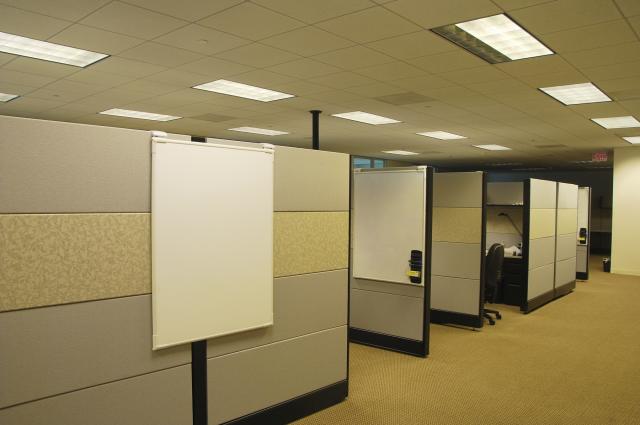
How can Minnesota improve their light levels and save on cost?
Lighting in commercial buildings has been the target of energy efficiency programs for years, with the primary strategy one-for-one fixture replacement. However, recent changes to federal standards for fluorescent lamps and more stringent building and product codes, have eroded these program savings. Market changes are forcing energy efficiency programs to look beyond efficacy-based, one-for-one replacement incentives. Research in other Midwestern states shows that LED-lit spaces in commercial buildings are often over-lit, which leads to excess energy usage and dissatisfied occupants. It also suggests that significant savings potential exists through task tuning of light levels and redesign of overlit spaces.
LEDs lighting energy can easily be reduced in overlit spaces. Task tuning, or high-end trim, is the adjustment of electric light levels by limiting the maximum light output and power of lighting systems. This control allows for the adjustment of light levels in existing overlit spaces, thereby saving electrical energy. There is currently a low penetration of high-end trim of lighting systems in Minnesota buildings.
LEDs are rapidly increasing their share of the new and replacement lighting market. The DOE estimates that in 2012, LEDs comprised only 1% of the market. However, this increased to 3% in 2014 and 12.6% in 2016. The DOE further projects that by 2020, LEDs will comprise 48% of the lighting market. Using this information, we estimated the portion of commercial spaces in Minnesota served by LEDs in 2020. Across all the commercial building types of interest, LEDs serve 11% of the total area.
Commercial and manufacturing buildings in Minnesota use approximately 5.3 billion kWh of lighting energy annually. Five building types comprise approximately two-thirds of the lighting energy. They include:
- Manufacturing (27%)
- Education (12%)
- Warehouse (11%)
- Office (10%)
- Outpatient Healthcare (6%)
However, the average light level (often called illuminance) in typical spaces in Minnesota, as well as associated lighting system characteristics, is not well understood. A light level characterization study, including site visits to accurately measure light levels, would fill this knowledge gap and lead to opportunities for increased energy savings. So, we did just that.
On behalf of the Minnesota Department of Commerce, Division of Energy Resources, through the Conservation Applied Research and Development (CARD) program, Slipstream collected information from Minnesota businesses on their light levels and associated lighting system characteristics. This information will help utility Conservation Improvement Programs (CIPs) address savings opportunities from optimizing light levels by identifying appropriate educational strategies and program offerings and resources.
Slipstream designed and conducted this research study to provide Minnesota utilities with data that will help push customers to implement more comprehensive lighting upgrades that could include controls, lower wattage fixtures, and task tuning. Our study was comprised of both primary and secondary research. We reviewed studies relevant to this project, conducted a segmentation of Minnesota lighting based on U.S. Energy Information Administration data, interviewed Minnesota energy efficiency program staff and a select group of stakeholders, and measured light levels in a representative sample of Minnesota businesses.
Within the major building types, the predominant and overlapping space types are open and private offices, conference rooms, warehouse areas, and corridors (including hallways and stairwells). We also included classrooms as they were of interest to the Minnesota Department of Commerce program staff. Open plan offices are ideal for adjusting light levels since the light levels and electrical power of a significant amount of lighting power can be affected with one adjustment. This minimizes the time and associated cost of achieving savings. Other good candidates are space types with many similar spaces such as private offices and classrooms.
We visited a total of 36 buildings across Minnesota, where we measured the illuminances of a variety of spaces. Preliminary results indicate that the measured illuminance was higher than the Illuminating Engineers Society (IES) recommendation on average across all space types.
We used the results from the site visits and data gleaned from our literature review to quantify the potential for energy savings from optimizing light levels. We distilled lessons learned to clarify effective approaches for CIPs to reach this market segment.
Learn more with a free webinar
We covered results in a free webinar in September 2020, Improve your commercial light levels and save on cost. You can view the recording anytime.